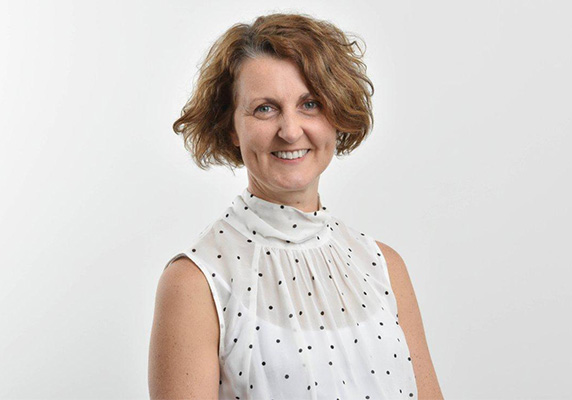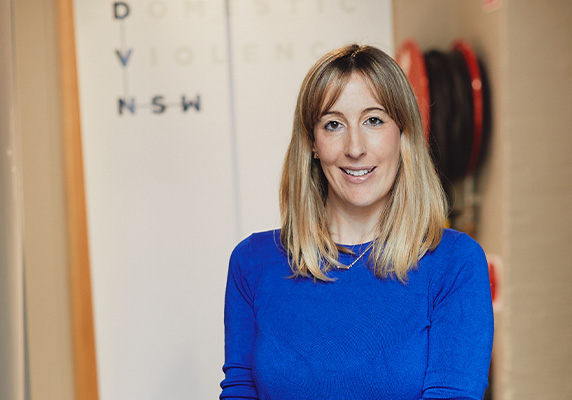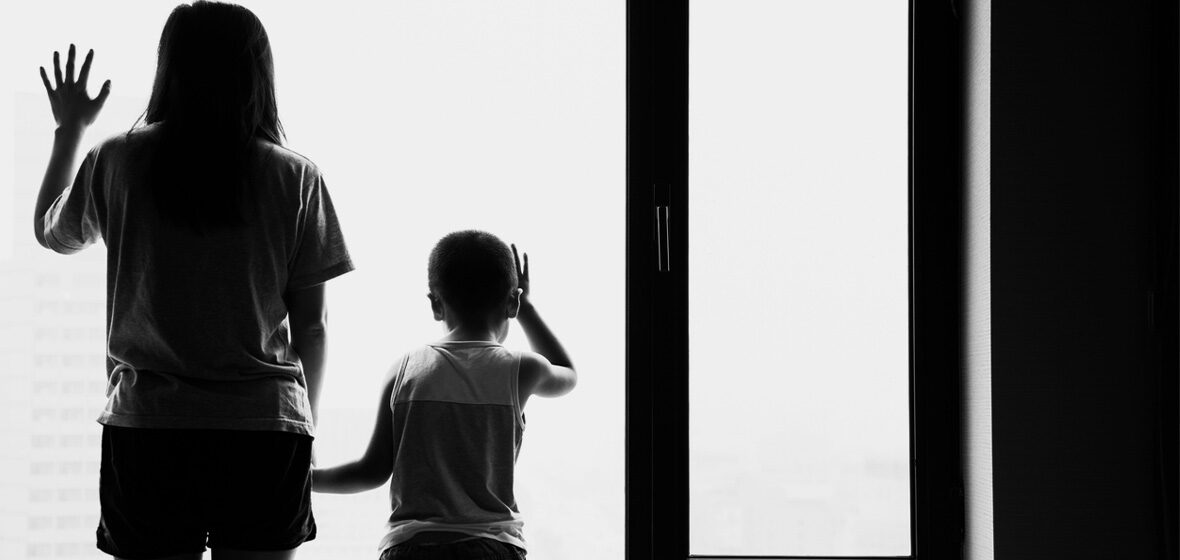The rate of domestic violence is disproportionately high in regional NSW. But the acute shortage of housing means many women are returning to the perpetrator, and children are suffering. Can federal and state government plans address this?
In December last year, a Bureau of Crime Statistics and Research (BOCSAR) report indicated that the rate of domestic assaults in regional NSW communities in the prior 12 months was 30 per cent higher than the statewide average. The report also revealed that regional NSW has experienced higher rates of violence annually for the last five years, with a 19 per cent increase in reported domestic violence assaults since 2018.
The BOCSAR figures show that in 2017 Tumut in the Riverina region had the twelfth-highest rate of domestic violence assaults per head of population in NSW.
Karen Tobin is the manager of Tumut Regional Family Services (TRFS), and previously a case manager. Located in the western foothills of the Snowy Mountains, Tumut has a population of around 6,700. TRFS was founded over 30 years ago by a group of volunteer women. Tobin volunteered for the service before joining the staff.
Tobin explains, “Tumut is a small town in comparison to Wagga and the bigger cities in our areas. We’re just over 100km, or an hour and a half, from Wagga, so our service is part of an alliance with their support services. We’re funded to support women and children and we have a partner service that supports men and another that supports youth.”
She says, “People here have family and friends here and work here; their support systems are here. This housing crisis is the worst we’ve ever had. Snowy 2.0 is being built right near here, so the local landlords have put their rents up to cash in on Snowy Hydro tradies renting here and paying whatever their companies will pay.”
“A lot of people may not be presenting because they’re aware there’s nowhere to live if they do present, so they stay where they are and put up with it,” Tobin says, lamenting the housing shortage.
‘A lot of people [experiencing domestic violence] may not be presenting because they’re aware there’s nowhere to go if they do present, so they stay where they are and put up with it.’
TRFS has a four-unit refuge, which is always at capacity, and there is a waitlist. When a woman presents, TRFS rings around local motels to secure one to two nights of accommodation. Food, toiletries and discretionary money are provided, and a case worker discusses where the woman could stay in the longer term. If she has family interstate, she is provided funding to travel there. Otherwise, neighbouring towns are generally preferred for their proximity to her friends and family.
“It’s a small town so if someone’s car is out front, then people might recognise the car and know who has shown up here. It’s hard to say if DV has increased, but the number of our clients presenting monthly has almost doubled. We get many referrals from various services and we’re funded to see 55 DV clients a year, but we go well above that. I’d say everybody is going above that. Plus, many people show up for the homelessness service and then it becomes clear that they’ve experienced DV and there’s a history of trauma. We see intergenerational clients, where we see the mother and then later we’ll see the daughter.”
Tobin is optimistic that the five-year NSW Domestic and Family Violence Plan and the 10-year National Plan to End Violence against Women and Children will have a positive impact.
“Funding has increased during the time I’ve been in this role and I can’t see it going backwards. We’re funded through a mixture of state and federal funding because we provide both DV and homelessness services.”
No simple solution
Jackie Fitzgerald is executive director of BOCSAR. She says towns in western NSW like Moree, Walgett and Bourke are reporting levels of domestic violence more than five times the state average.
“Domestic violence is a difficult policy area and there’s no clear literature on what can be done to prevent and intervene,” she says. “There’s no question that high rates of domestic violence are related to socioeconomic disadvantage, systemic unemployment, high rates of drug and alcohol abuse, and poor educational outcomes. There’s no simple solution that can be dropped into communities to turn things around. This is an intergenerational disadvantage. The government have the will to turn around these problems but the path out of this level of violence is not an obvious one.”

Fitzgerald explains, “We’re basing our information on police-recorded crime statistics, so that has limitations, but according to that data the rate of domestic violence in north-western NSW is much higher than in the rest of the state.
“Bourke, Walgett, and Moree have got alarmingly high rates of domestic violence, much higher than the state average per population of 400 incidents per 100,000. Generally, in the regions we see higher rates of all types of violence. In Coonamble it’s nearly four times higher than the state average, Dubbo three times higher than the state average, Moree five times higher and Walgett nearly six times higher. Those communities are small, but Walgett had 138 incidents and Moree had 283 incidents last year, so even though the locations are small, the volumes add up. It’s indicative of a serious problem in those communities.”
In 2012, the NSW Women’s Alliance was established. It formed a collective of leading organisations with expertise in sexual, domestic and family violence, including Domestic Violence NSW, Women’s Legal Service NSW, ACON, Muslim Women Australia, No To Violence, NSW Council of Social Service and Wirringa Baiya Aboriginal Women’s Legal Centre.
On 11 August last year, NSW Women’s Alliance launched its Action To End Gendered Violence campaign, in alignment with the 2023 state election. The Alliance proposed seven recommendations to reduce sexual, domestic and family violence, including the investment of $20 million per year in preventing violence, an additional $133 million per year for specialist services, and an extension to the consultation period for the NSW Coercive Control Bill, which has been deemed problematic.
A national plan
Domestic Violence NSW (DVNSW) is one of the members of the alliance. Delia Donovan, CEO of DVNSW since 2020, says, “The national plan was released around October and I was pleased to see that there was significant consultation. The plan brings together the federal, state and territory governments and it includes provisions on accountability, to ensure that progress is going to be tracked, monitored and reported on.”

Donovan continues, “The national plan also emphasises the importance of engaging men and boys. The plan is very inclusive in terms of Aboriginal, Torres Strait Islander, multicultural and LGBTQI+ communities. We still want to see strong funding commitments with specific measurable targets.”
We have to significantly change how we think about domestic and family violence, Donovan asserts.
“We need to work on the ground, in the community and in schools. People are enabling domestic and family violence in terms of victim blaming and media reporting, too. In this landscape we need to fund support services properly, but we need to think about how we fund prevention. We need to look at cultural and systemic work to address these entrenched patriarchal systems.”
DVNSW advocates on behalf of its regional members.
Donovan says, “There’s a lack of housing, transport, safe rooms in courts and general infrastructure. In those regional areas, there’s much more traditional gender norms and values and patriarchal power structures, and ideas about privacy and ‘keeping it in the family’. There’s higher gun ownership in regional areas of NSW, much more isolation, natural disasters are much more frequent: floods, droughts and fires. People in regional and remote areas in Australia are 24 times more likely to be hospitalised as a result of domestic and family violence.
“We hold a regional forum with our members each year and we reach out to the NSW government to attend, but there’s a real problem with housing that has been clear year on year. When women don’t have anywhere to go, they return to the perpetrator to avoid being homeless.”
She adds,“The main thing we want to drive home is that you can’t have a plan without funding attached so we know what we can deliver, and that it’s quality-assured. An independent, transparent review process would enable us to ensure we’re meeting targets, and reviewing, tracking and monitoring progress.”
Read more
Bureau of Crime Statistics and Research (BOCSAR) report
NSW Domestic and Family Violence Plan




